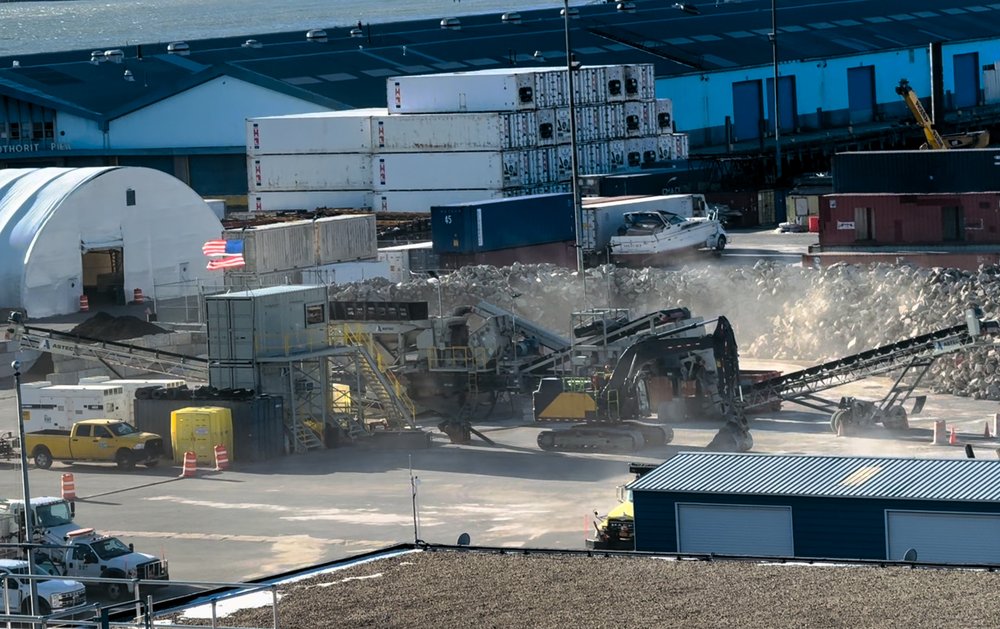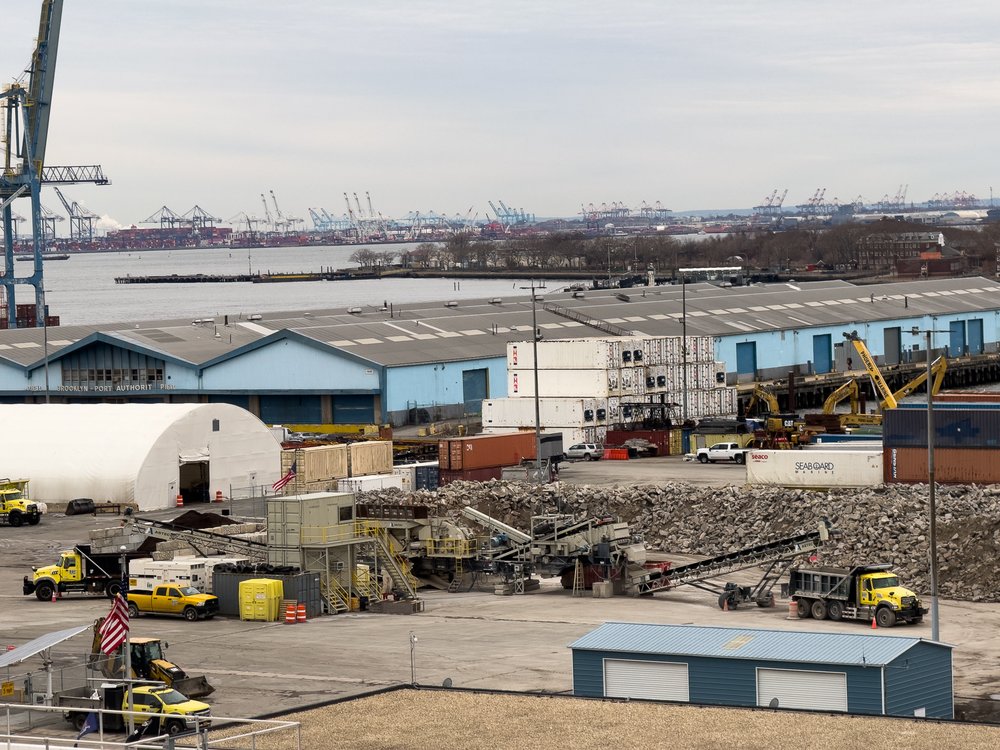Brooklyn residents blanketed by dust want city's concrete recycling facility shut down
Feb. 9, 2025, 10:01 a.m.
Locals near the facility said they avoid opening their windows because the crushed material makes it hard to breathe and burns their eyes.

Residents of a stretch of Columbia Street on the Brooklyn waterfront say a city-run concrete recycling facility is blanketing their neighborhood in dust so thick they can smell and taste cement.
The Department of Transportation facility opened in February of 2024 after being relocated from Sunset Park. Concrete recycling is a sustainable practice, but the process produces dust as rubble is crushed and filtered for reuse. Locals near the facility said they avoid opening their windows because the crushed material makes it hard to breathe and burns their eyes. They shared photos of dust covering car windshields, building facades and air purifiers.
“I never in my wildest dreams thought I would be dealing with this, and I just can't get over how this has changed everything,” said Sharon Gordon, an opera singer who lives across the street from the facility and has had to stop working because she is struggling to breathe. ”We can't wait any longer.”
A petition to close the facility has more than 850 signatures. Last month about 50 residents held a rally outside the yard, where a few went so far as to block transportation department trucks from entering, according to the New York Post.
Transportation department spokesperson Will Livingston wrote in an email that the recycling facility was temporarily relocated from the South Brooklyn Army Terminal last year to make way for construction of offshore wind infrastructure.
"Concrete recycling is an important part of NYC DOT’s safety and accessibility work,” Livingston said. “We are taking all the necessary steps to keep the public safe — though in response to community feedback, NYC DOT has taken new measures to decrease the size of the recycled material piles in this plant and further reduce dust and noise."
The city plans to close the temporary facility around Feb. 2026.
Previously, the lot was littered with abandoned cars and home to a cat colony, according to residents.
“On all these windy days, you can see it, blowing, billowing through the air. It looks like a sandstorm,” said Molly Pearson, mother of two children, who lives across the street from the facility. “It's chalky, and it smells almost like something sweet that's burnt.”
Trucks begin coming and going from the facility as soon as 6 a.m. Noise from the heavy duty machinery crushing the concrete is another source of aggravation for residents.
”Our constituents are breathing in toxic dust; the noise pollution is unrelenting," said City Council member Shahana Hanif. "Enough is enough."

She said her office started receiving complaints from residents about dust soon after the facility opened. Hanif toured the facility in July and later sent the Department of Transportation a list of recommendations that included dust mitigation, more communication with the community and repaving the area around the site.
The city responded by installing an additional sprinkler system to a concrete crusher to reduce dust and moisten the large piles onsite. On days when wind gusts exceed 30 mph, the agency said it ceases operations and reduces the size of piles.
Nevertheless, Hanif says the complaints keep rolling in.
“When we reached out to the mayor's office to shut this concrete recycling facility down, they essentially said 'no,'” Hanif said.
The mayor’s office did not return a request for comment.
Concrete recycling is an eco-friendly practice, in theory. Reusing concrete means less use of natural resources, fewer emissions, less landfill waste and reduced costs. The process begins by carting away old concrete from a demolition site and crushing it with industrial machinery that uses impactors and jaw-like crushers. After breaking it down, the debris is screened to remove dirt and steel. The crushed concrete is then separated into piles.
But the process does pose health risks.The dust contains silica, aluminum, calcium and iron. According to OSHA, prolonged exposure to silica particles can cause lung cancer, kidney disease, chronic obstructive pulmonary disease and silicosis – an incurable lung disease that causes disability and death.
“The smaller the particles are, the more harmful they are and the deeper they get,” said Marianthi-Anna Kioumourtzoglou, assistant professor of environmental health sciences at Columbia's Mailman School of Public Health. “If you smell it, and if you see it, that definitely means you are exposed to it.”
The city has plans to install an irrigation system to further control the dust this month.
”You can certainly feel it when you're outside,” Pearson said. “ You can see people pull their shirts up over their nose and their mouth.”
Greenpoint development to be built on top of toxic soil too deep to remove